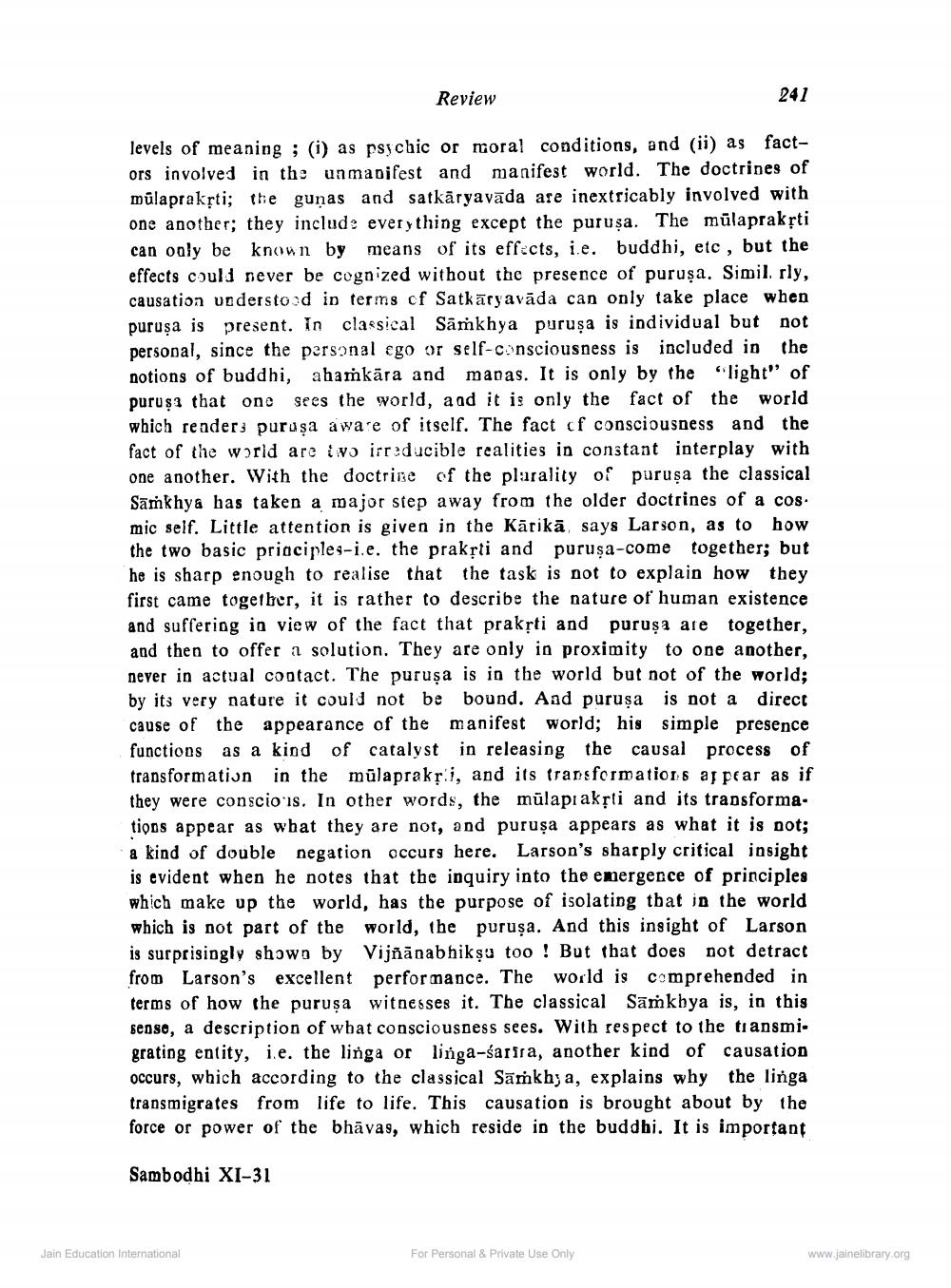________________
Review
Jain Education International
fact
levels of meaning; (i) as psychic or moral conditions, and (ii) as ors involved in the unmanifest and manifest world. The doctrines of mülaprakrti; the gunas and satkāryavāda are inextricably involved with one another; they include everything except the purusa. The mûlaprakrti can only be known by means of its effects, i.e. buddhi, etc, but the effects could never be cognized without the presence of purusa. Simil. rly, causation understood in terms of Satkaryavada can only take place when purusa is present. In classical Samkhya purusa is individual but personal, since the personal ego or self-consciousness is included in the notions of buddhi, aharhkära and manas. It is only by the "light" of purusa that one sees the world, and it is only the fact of the world which renders purusa aware of itself. The fact of consciousness and the fact of the world are two irreducible realities in constant interplay with one another. With the doctrine of the plurality of puruşa the classical Samkhya has taken a major step away from the older doctrines of a cos mic self. Little attention is given in the Kärikā, says Larson, as to the two basic principles-i.e. the prakṛti and purusa-come together; but he is sharp enough to realise that the task is not to explain how they first came together, it is rather to describe the nature of human existence and suffering in view of the fact that prakṛti and purusa are together, and then to offer a solution. They are only in proximity to one another, never in actual contact. The puruşa is in the world but not of the world; by its very nature it could not be bound. And purusa is not a direct cause of the appearance of the manifest world; his simple presence functions as a kind of catalyst in releasing the causal process of transformation in the mülaprakri, and its transformations appear as if they were conscious. In other words, the mulapi akṛti and its transformations appear as what they are not, and puruşa appears as what it is not; a kind of double negation occurs here. Larson's sharply critical insight is evident when he notes that the inquiry into the emergence of principles which make up the world, has the purpose of isolating that in the world which is not part of the world, the purușa. And this insight of Larson is surprisingly shown by Vijñānabhikṣu too! But that does not detract from Larson's excellent performance. The world is comprehended in terms of how the purusa witnesses it. The classical Samkhya is, in this sense, a description of what consciousness sees. With respect to the transmigrating entity, i.e. the linga or linga-sartra, another kind of causation. occurs, which according to the classical Samkhya, explains why the linga transmigrates from life to life. This causation is brought about by the force or power of the bhavas, which reside in the buddhi. It is important
Sambodhi XI-31
241
For Personal & Private Use Only
www.jainelibrary.org




